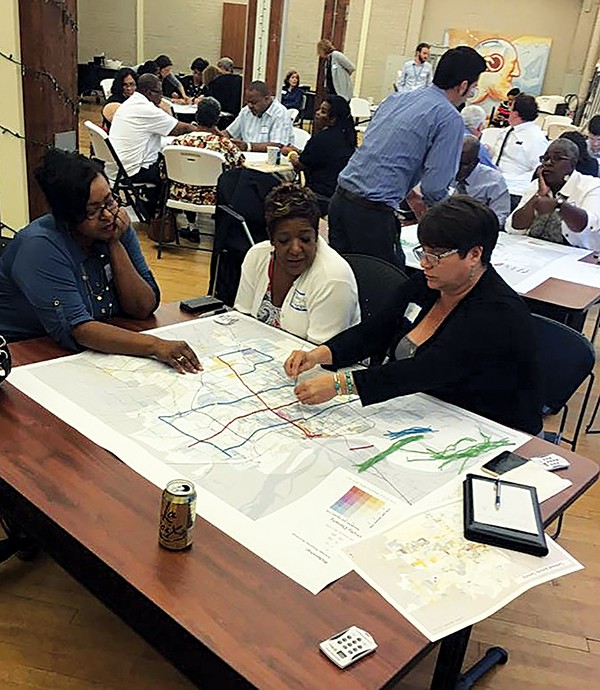The city, in collaboration with Innovate Memphis and the Memphis Area Transit Authority (MATA) asks that the public take a second survey on concepts for the future of Memphis transit.
This is the second phase in a process required for Tennessee’s transit systems to pursue various funding options laid out in Gov. Bill Haslam’s IMPROVE Act that passed in July. The legislation requires that MATA create a transit vision plan before going to the Memphis City Council to request more funding.
Planning began in September with stakeholder meetings, followed by community engagement. Now, the question is should MATA allocate resources to services that are more frequent and encourage high ridership or services that cover a larger percent of the city with less frequency.
To answer this question, Jarrett Walker + Associates (JWA), the transit consultant group working with the city, drafted four basic network concepts — two of them revenue neutral, two requiring additional funding.

MATA envisions its future.
Using existing funds, the Coverage concept is most similar to today’s network with routes extending well beyond the city’s core. But, with coverage spread out, most buses would come about every 60 minutes or greater.
The Ridership concept, also cost-neutral, concentrates services within the I-240 loop. This means buses on all routes would run every 30 minutes or less. The downside, though, Scudder Wagg of JWA said, is that some neighborhoods, namely in the eastern and southeastern areas of the city, would lose access to services completely.
But, with about $45 million of additional funding, Wagg said MATA could provide a service that increases bus frequency as well as extends coverage outside of the city’s center. “If you don’t increase resources, it’ll be painful,” Wagg said.
CEO of MATA Gary Rosenfeld agreed, saying that funding for the city’s transit system has been stagnant for years. “We need to change that for the benefit of the community.”
Coverage PLUS would require additional funding. Buses on every route would come every 30 minutes or less, while still servicing most areas that are currently covered.
Ridership PLUS proposes the highest frequency services, creating five east-west routes out of downtown — including routes on Poplar, Lamar, and Jackson — and two going north-south traveling from Brooks to Chelsea. Wagg said this concept promotes “seamless transfers.”
The PLUS concepts also include replacing fixed-route services in Southwest Memphis with dial-a-ride transit services that would run on flexible routes, connecting to a new transit center near Mitchell and 3rd Street.
Wagg added that the concepts aren’t to prompt an “either-or” decision, but rather to provide a range of concepts that “frame the extreme ends.”
Over the next two months, Innovate Memphis staff will lead outreach and survey the public on the four concepts. The survey is also available on the Memphis 3.0 website.
Justin Davis of the Memphis Bus Riders’ Union weighed in on the concepts, saying that the riders’ union would be most excited to see a scenario in which MATA gets a robust influx of funding.
“On our end, I hope we don’t get put in a position where we have to sacrifice service for more vulnerable communities in the process of making those routes on big coordinators run faster,” he said. “Race and class equity is something we should be asking about in every step of the process.”
After the public engagement wraps up, a recommended network will be drafted in February, with the final vision plan slated for completion in May.